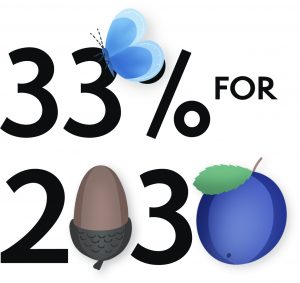ReNature: Nature Recovery in the South Downs National Park
Nature in the South Downs National Park
The unique combination of geology and microclimates of the South Downs National Park has created a rich mosaic of habitats that supports many rare and internationally important wildlife species.
- Sheep-grazed downland is the iconic habitat of the chalk landscape – here you can find rare plants such as the round-headed rampion, orchids ranging from the burnt orchid and early spider orchid to autumn lady’s tresses, and butterflies including the Adonis and chalkhill blues.
- The greensand of the Western Weald contains important lowland heathland habitats including the internationally designated Woolmer Forest, the only site in the British Isles where all our native reptile and amphibian species are found.
- There are large areas of ancient woodland, for example, the yew woodlands of Kingley Vale and the magnificent ‘hanging’ woodlands of the Hampshire
- The river valleys intersecting the South Downs support wetland habitats and a wealth of birdlife, notably at the Brooks in the Arun Valley. The clear chalk streams of the Meon and Itchen in Hampshire support a wealth of aquatic plants, fish, invertebrates and elusive mammals such as otter and water vole.
- The extensive chalk sea cliffs and shoreline in the east host a wide range of coastal wildlife including breeding colonies of seabirds such as kittiwakes and fulmars.
- The extensive farmland habitats of the South Downs are also important for many species of wildlife, including rare arable wildflowers and nationally declining farmland bir Corn bunting, skylark, lapwing, yellowhammer and grey partridge are notable examples.
But even here, in one of our most 10 most important protected landscapes in England, nature is in trouble and it needs all of our help. Climate change, habitat fragmentation, poor land management, pests and non-native invasive species all add to the pressure on nature.
ReNature Ambitions
Nature recovery can happen anywhere and at any scale, from changing an unused golf course into a nature haven to creating roadside wildflower verges and from nature friendly farms to nature friendly gardens in our homes. While the scale varies from small to landscape-scale, our ambition is big – we want nature everywhere, for everyone.
Currently 25% of the National Park is managed for nature. By 2030, working with a strong partnership of farmers, land managers, communities and a wide range of partners we will deliver 33% of land managed for nature and encourage the remaining 67% to be nature friendly.

This Resource Hub for nature recovery is designed to help everyone to find information and support to help them ReNature – as land managers, communities, parishes, schools, businesses and as individuals. Together we can ReNature.
We want:
- The rich habitats of the South Downs National Park to be enhanced, extended, connected and act as a core to a wider wildlife network.
- The South Downs National Park to be a nature rich core connecting to the wider countryside beyond its boundaries.
- Wildlife to flourish and be able to move easily through the landscape and adapt to climate change.
- Our farmed landscape to remain productive but to also be a place where nature thrives.
- People living in and visiting the National Park to be connected to the special landscape and the unique wildlife that lives here.
You can find out more about our ReNature campaign
